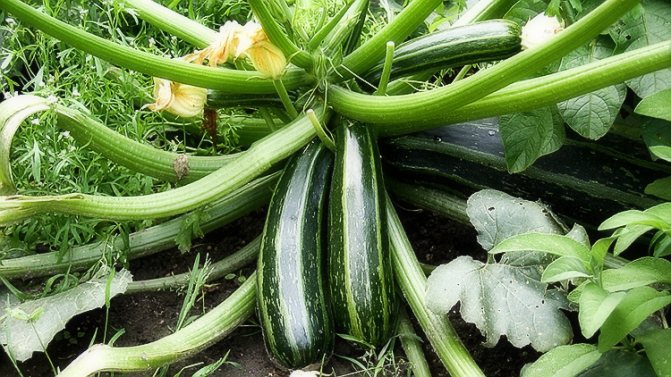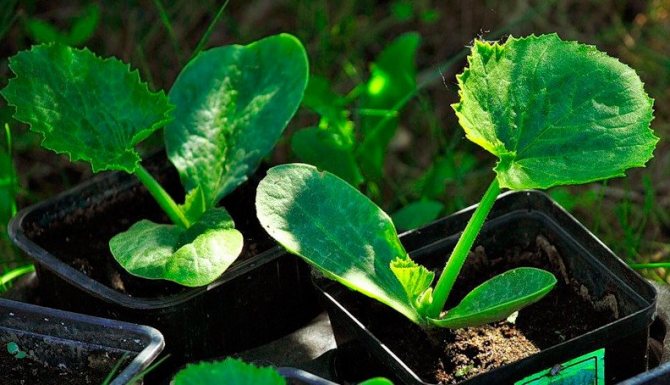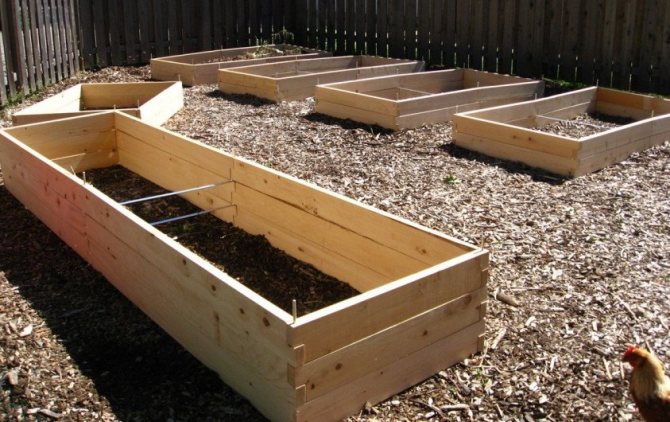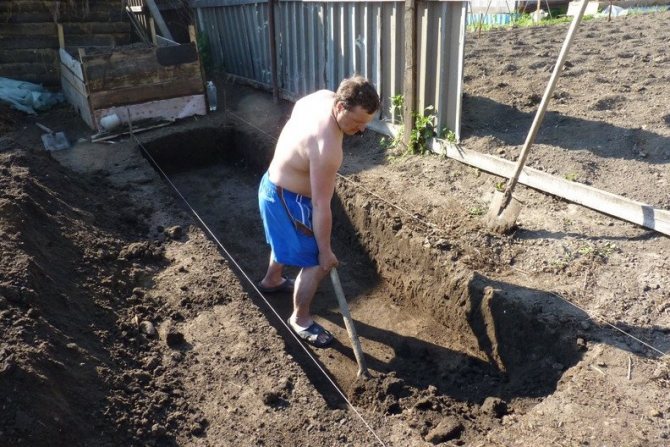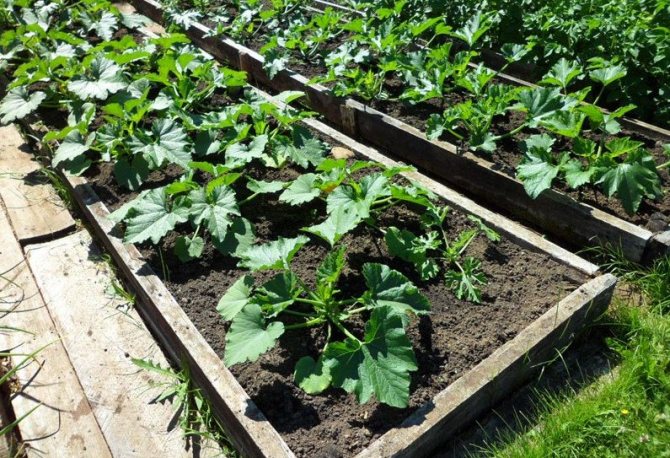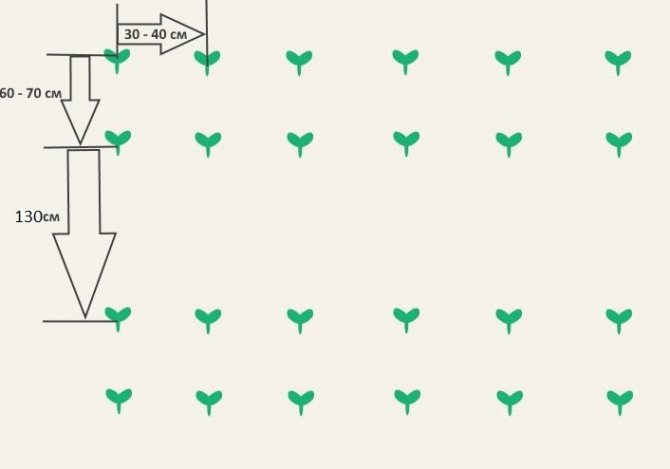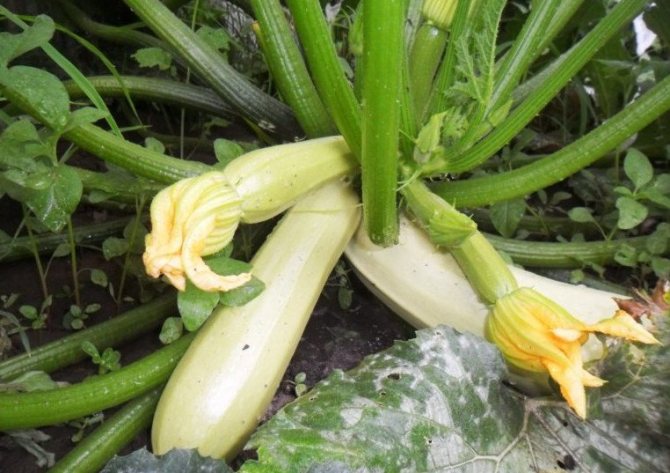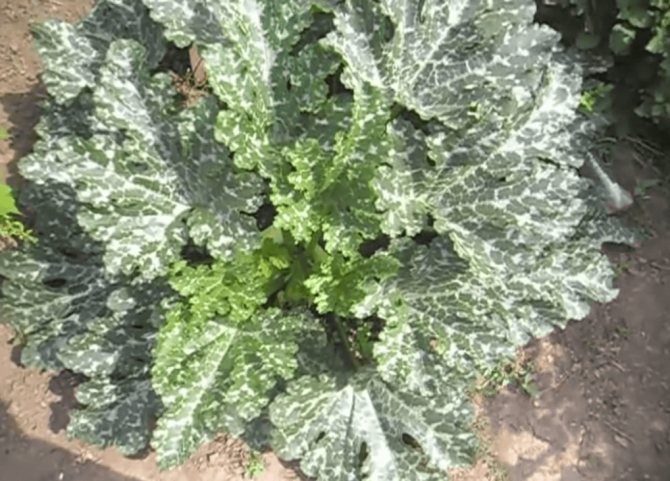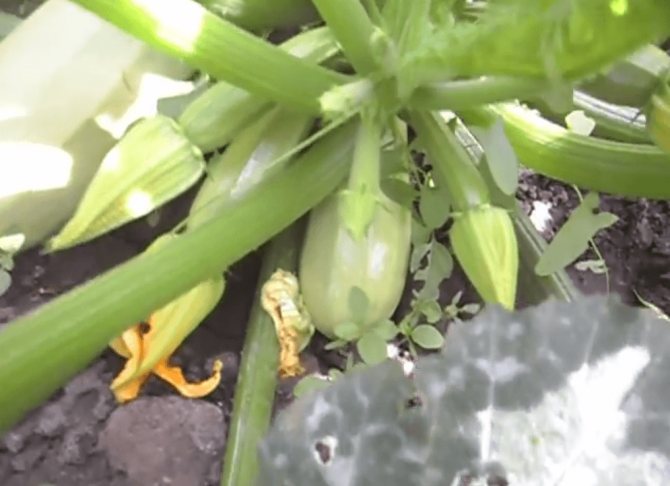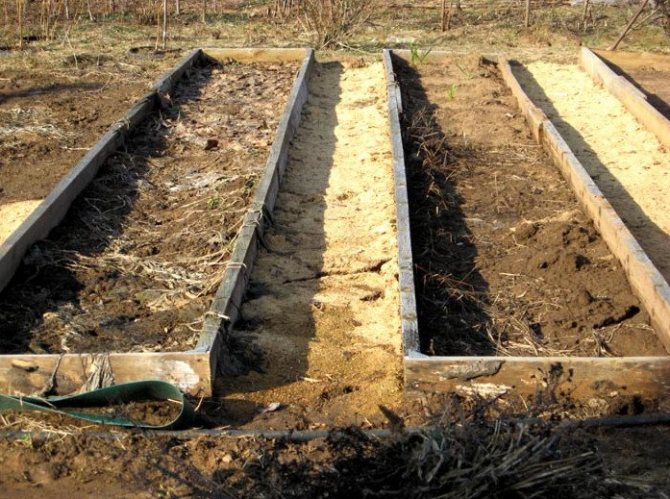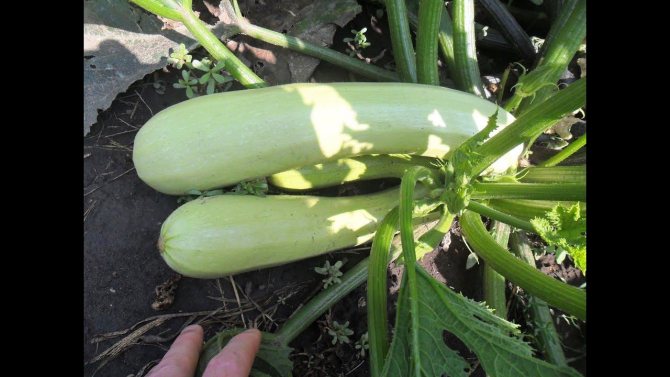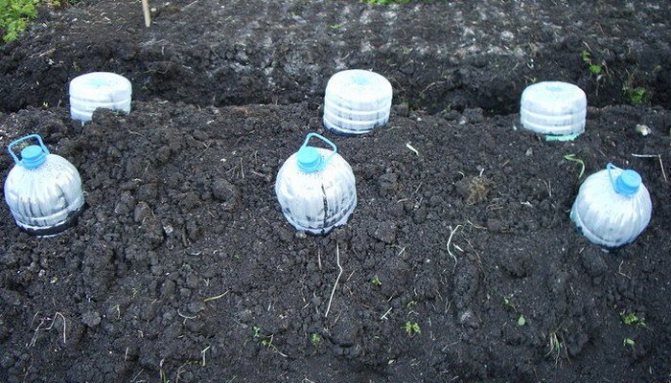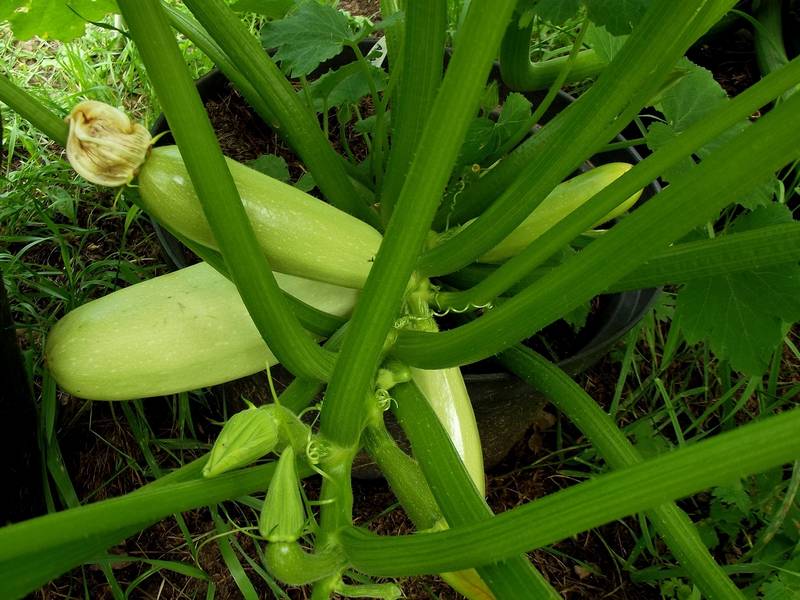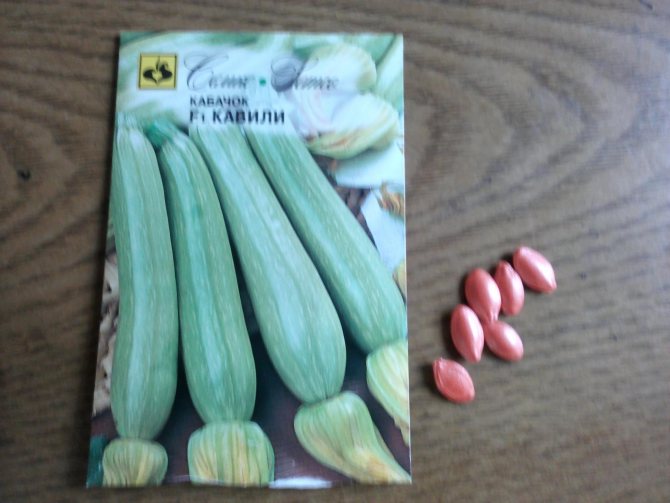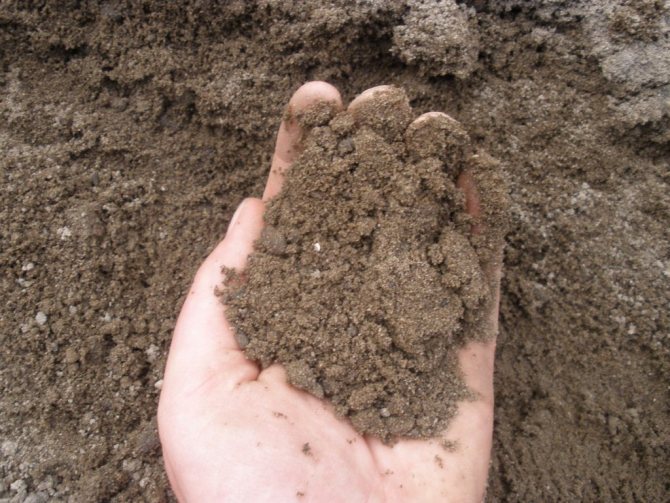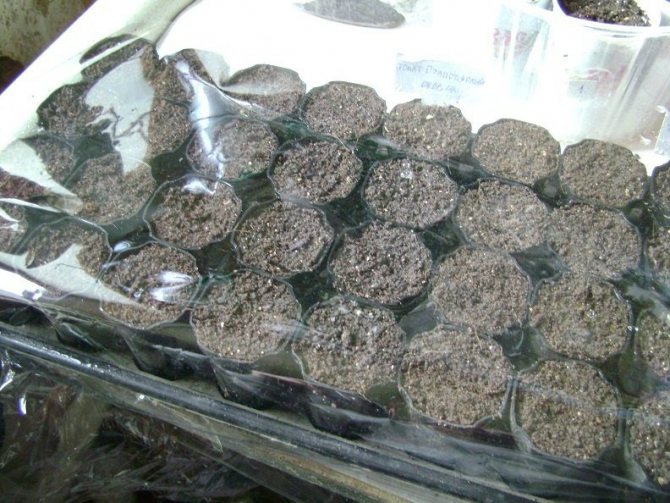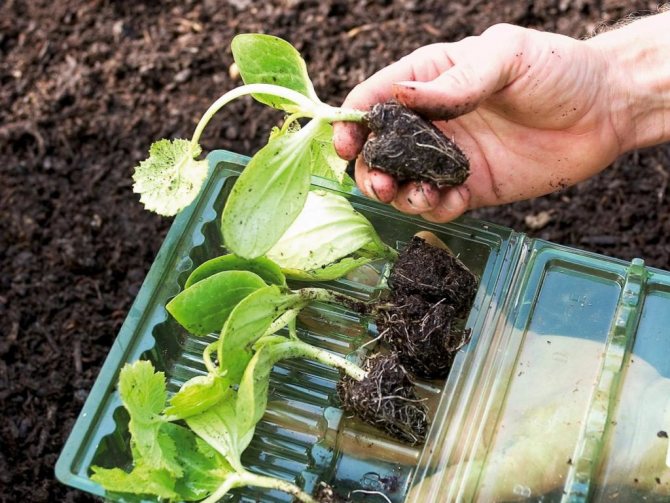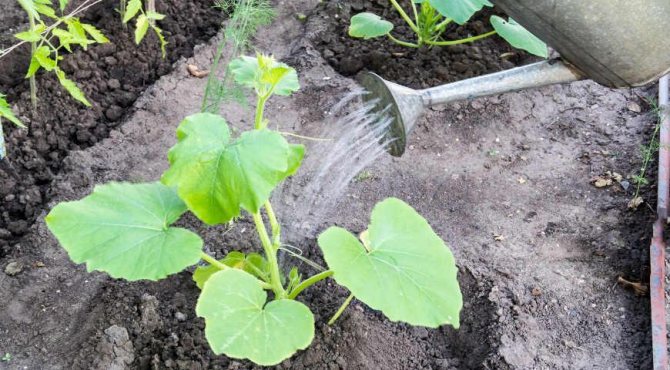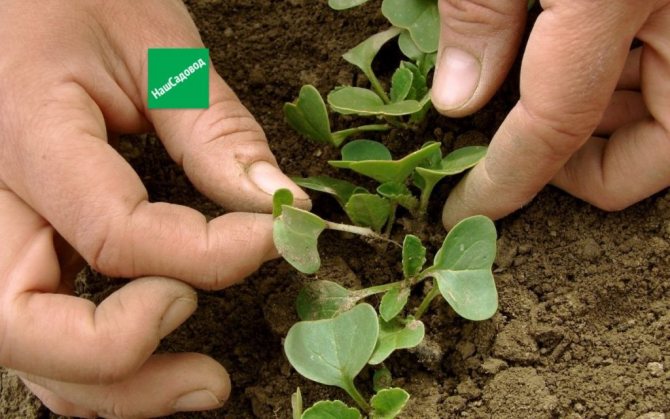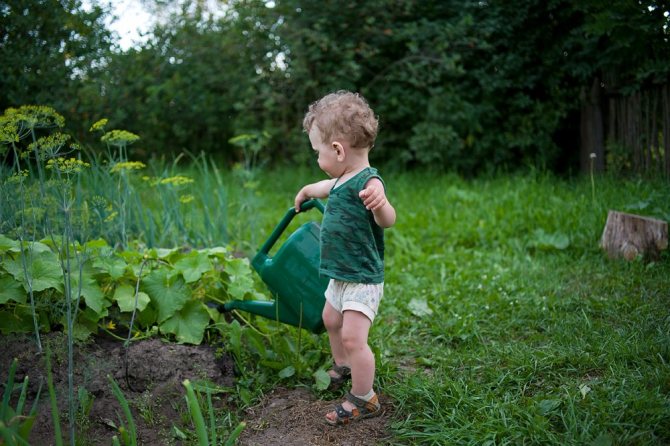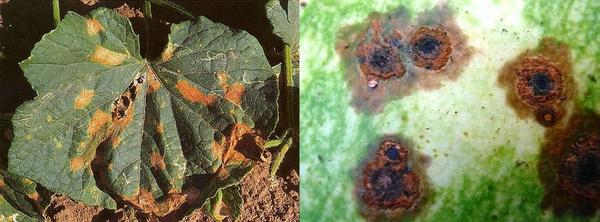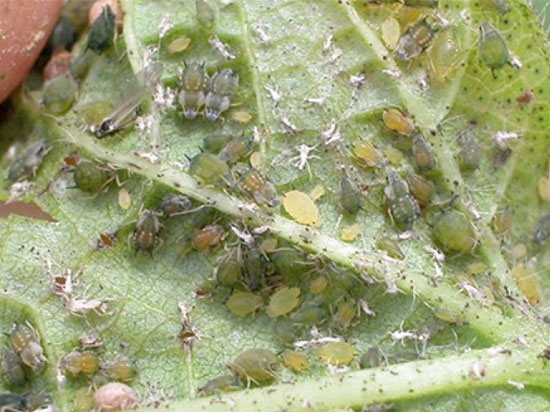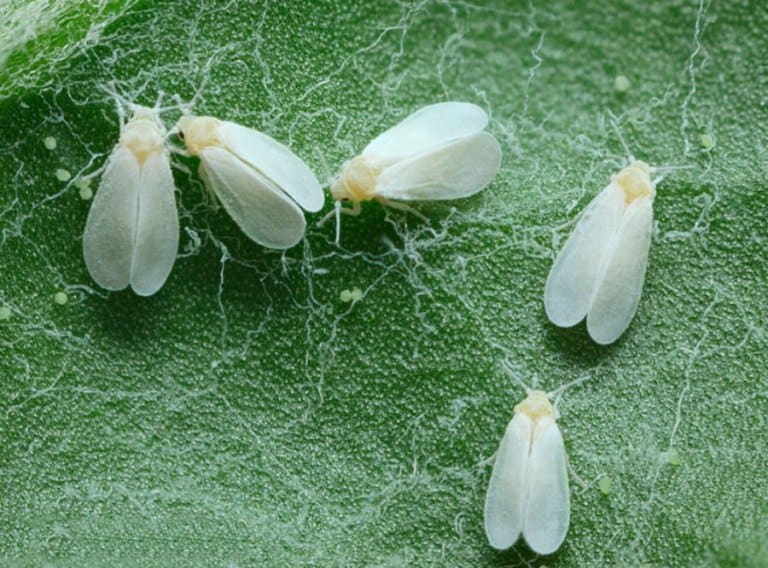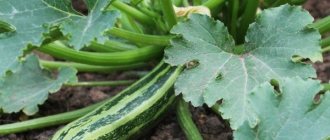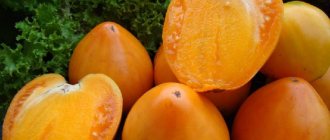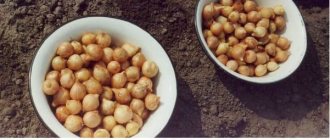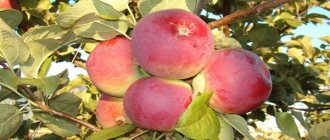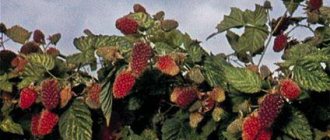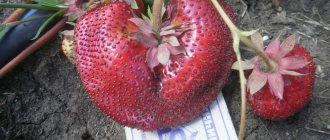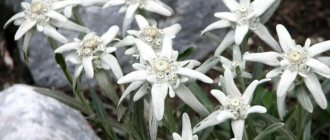Description of the variety of squash Kavili F1
Cavili F1 is a bush hybrid with internodes. The leaves are dark green, large with white spots. The bushes are large, but compact, they do not take up much space. The root system is developed. The flowering type is predominantly female.

Cavili F1 - bush hybrid with internodes
Fruits are cylindrical, almost identical in shape, straight, not curved, with slight ribbing. The color of the peel is light green, without spots and stripes. The pulp is white, dense, juicy. Zucchini length 16-22 cm, weight up to 500 g, average weight - 300 g.
When to harvest and how to store the crop
Although the zucchini remaining on the bushes after ripening remain tasty, it is better not to delay harvesting, otherwise the plant will not have enough strength to ripen other fruits. When the fruit reaches 20-22 cm in length, it can be plucked. This usually occurs in July and lasts until the end of August.
If you plan to store zucchini, then leave the stalks when harvesting. For storage in the cellar, a wooden flooring is made and Cavili is laid on it in 1 layer. In an apartment, you can store it in a cold closet or a dark corner of the balcony, while each of them is wrapped in paper. The shelf life is 2 months.
Also find out if zucchini can be frozen fresh for the winter.
For storage, you can use the refrigerator, there it can lie for no more than a month.
So the Kavili hybrid zucchini is a tasty fruit that you can get pretty quickly with minimal maintenance. However, it is necessary to follow the rules of crop rotation and provide the bushes with enough space to grow. Also remember that you will need to buy seeds every year to plant.
What are the advantages and disadvantages of a hybrid?
Check out these articles as well
- Milk separator
- Spunbond and its types
- Chicken brooder
- Simmental breed of cows
Zucchini Kavili F1 is considered by many gardeners to be the best among hybrids and varieties according to various criteria.
- High yield - 9 kg / m. sq. Zucchini grows by leaps and bounds, so planting them in large quantities is only recommended if they are for sale.


High yield - 9 kg / m. sq.
- Long-term fruiting - up to 2 months.
- There is resistance to powdery mildew.
- Marketability is good. Zucchini can be sold on the market without any problems.
The deficiencies of a hybrid are usually revealed with poor grooming or improper planting.
- Poorly resistant to frost, therefore it is planted after late frosts.
- Drought intolerant. With a lack of moisture, the fruits cannot fully develop.
Gardeners reviews
Oleg, Dnipro
They are good both in the summer and for harvesting for future use. A new discovery for our site is "Kavili F1" zucchini. In fact, we plant four to five varieties in the country. They are all different in taste and yield.
Shmelik
Although the manufacturer promises a fruit weight of 320 g, a couple of zucchini with a photo weighed about 1.5 kg each. Even though they have grown, they did not have time to coarse and went perfectly for freezing.
Where is the best place to plant Cavili F1?
Cavili F1 zucchini is grown in the open field. In a greenhouse, they can only be planted with additional lighting. The site must be sunny. Lack of light and heat will lead to underdeveloped fruits and reduced yields. Good predecessors are potatoes, leeks, cabbage of any kind.


Growing zucchini Cavili F1 in the open field
Important! It is impossible to plant Cavili F1 after pumpkin and cucumbers.
The land should be light, then the harvest will be rich, although the plant will grow in a heavy one, it will just give a harvest in a small amount. To improve the quality of the soil, you can dilute it on the site with river sand and peat. With an overestimated acidity, dolomite flour or lime is introduced, since the hybrid will not grow on acidic soil.
In autumn, the land for the future planting of zucchini is treated with organic (compost, ash) and mineral (superphosphate) fertilizers. The amount of fertilizer that needs to be applied for digging depends on the quality and type of soil.
Variety selection
It is very important to choose the right seeds. An inexperienced gardener can get confused by the variety of varieties of zucchini. The varieties differ in shape, color, taste, skin thickness.
According to the ripening rate, all varieties are divided:
- early ripening;
- mid-season;
- late ripening.
On the territory of cultivation for cultivation:
- in outskirts of Moscow;
- in the Urals;
- in Siberia.
There are many varieties, so before choosing seeds, you need to decide on some criteria. The selected variety must correspond to the region where it will be grown, the climatic zone. If you pay attention to this, then this culture will delight you with a bountiful harvest. It is difficult for a beginner to navigate, so it is worth listening to the opinion of professionals.
Cavili F1 is a hybrid, belongs to the Dutch selection. Suitable for outdoor cultivation. This is an early variety, its fruits are in the form of a cylinder, light green in color. It is recommended to plant in May, early June. Ripens in forty days. It is resistant to diseases, does not outgrow. Not more than 22 cm long. Weight is about 350 grams.
Iskander F1 is also a hybrid representative of the Dutch selection. It is resistant to low temperatures and can be sown in the ground as early as April. They grow up to 20 cm long and weigh up to 600 grams. The color is light green, the skin is thin, the pulp is juicy. Aging period 40-45 days.
Ardendo 174 F1 is a variety of Dutch origin, clavate and light green with dots in color. Average weight 600 grams. Ripens within 45 days. Can be planted in May. Resistant to temperature extremes, but requires abundant watering, loosening the soil and top dressing.
Aral F1 is also a hybrid, it gives an early harvest. It is recommended to sow in May, it is not afraid of frost. Fruits are light green in color and weigh up to 800 grams. Formation period - 45 days. Abundant watering is required.
Tsukesha is an early maturing and high-yielding variety. Dark green with small specks of color, grows up to 30 cm and weighs 1 kg. Sow in open ground in May. Ripens in 45 days. It has a tender and juicy flesh.
Belogor is a high-yield hybrid. The term of formation is 45 days. It is resistant to cold, seeds can be sown in April. It has a greenish white color and weighs up to 1 kg.
When can you plant zucchini in the ground?
We recommend reading our other articles
- Honey extractor - what is it, types
- Description of the breed Peking duck
- Currant vigorous
- How to deal with potato ring rot
The best temperature for germination of seeds of marrow Kavili F1 is + 15… + 18 degrees. At lower temperatures, germination will slow down. Therefore, the Kavili F1 squash is planted in May if the seeds are sown.
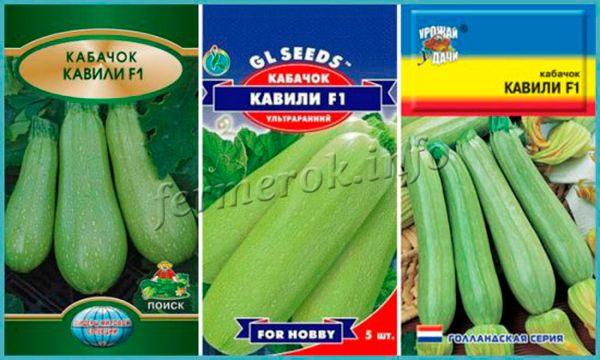

Therefore, the Kavili F1 zucchini is planted in May if the seeds are sown
If seedlings are planted, then the best time will be the beginning of June, but it is possible in May, if the seedlings are already large and have grown enough. And they begin to make seedlings from April. To extend the period of fruiting of zucchini, it is worth planting them at intervals of 3 weeks.
Cultivation methods
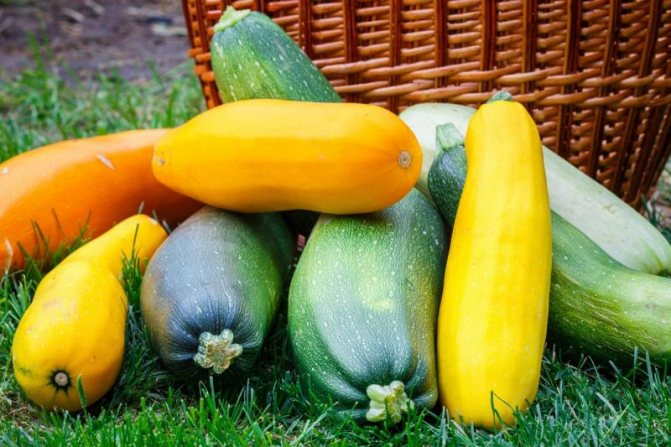

Cavili gives a good harvest on loose loamy soils with neutral acidity. Other types of soil will have to be improved.Sand is added to clay soil, peat, which retains moisture, is added to sandy soil.


Large and juicy fruits
In the open field
A well-lit and warm area is suitable for the variety. It is required to prepare it in the fall. For this, the bed is cleaned. The earth is dug to a depth of 35 cm, the following fertilizers are applied to 1 m2:
- 6-8 kg of rotted manure or compost;
- 50-60 g of superphosphate and potassium salt.
For depleted soils, the amount of top dressing made should be increased.
In the spring, a week before planting, 50-60 g of ammonium nitrate per 1 m² are introduced into the soil. They dig up an earth 25 cm thick. The ground is ready for landing if the lump crumbles when thrown.
In the greenhouse
In regions with a cold climate, it is better to plant zucchini in protected ground. Growing principles are the same as in the open area. The advantages of this kind of cultivation:
- reduction of the growing season;
- obtaining a high yield in a short time;
- improving the palatability of fruits;
- plants do not freeze, because the temperature in the greenhouse is constant.
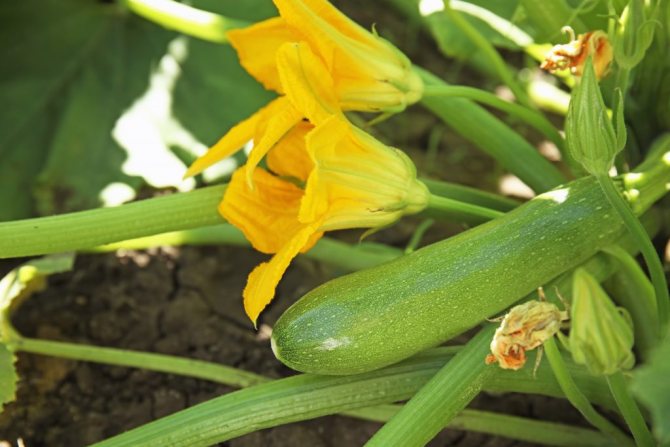

The soil is dug up in the fall to a depth of 8 cm, applying fertilizers. If the gardener did not have time to feed, then this can be done in the spring. Before planting, the soil in the hole is mixed with nitroammophos. One plant accounts for 30-40 g of the substance.
Optimal greenhouse conditions for planting:
- soil temperature - 20-25 ° С;
- air during the day - 23 ° С, at night - above 14 ° С.
In warm beds
If it is not possible to build a greenhouse, and the climate in the region is cold, it is worth making a warm garden bed. The advantages of this method:
- getting an early and high harvest;
- no feeding is required in the first year;
- ease of care;
- no threat of freezing.
The work is laborious, it starts in the fall. First, a wooden box with a height of 0.5 m is built. The bottom is made of a mesh with small cells. Then it is installed in a well-lit place and the following layers are laid:
- Drainage - made from substances that decompose for a long time. Branches, rotten boards, cardboard, etc. will do.
- The ground is 3 cm.
- Plant and food waste - 10-15 cm.
- Soil - 10 cm.
- Manure - 10 cm. Instead of it, plant residues are sometimes taken.
- Ground - 20 cm.
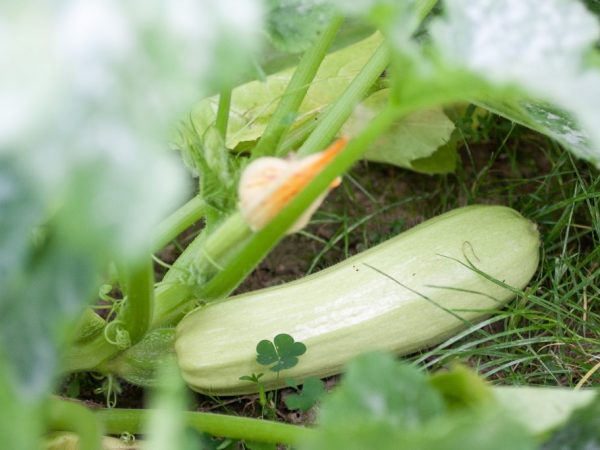

Zucchini are planted on prepared beds
Zucchini are planted in 2 methods: using seeds and seedlings. It is required to observe the crop rotation. In front of the zucchini in the garden, the following crops should grow:
- legumes;
- cabbage;
- potatoes;
- tomatoes;
- winter wheat.
Do not plant Cavili F1 after cucumbers, pumpkins and squash. Plants are capable of suffering from the same diseases.
Planting seeds
In warm regions, zucchini begins to be planted at the end of May. By this time, the air temperature should be at around 18 ° C, and the temperature of the soil at a depth of 10 cm - 12 ° C. The weather can extend the process until early June.
In each hole 5-6 cm deep, 2-4 seeds are placed. Planting scheme: 70 × 140 cm. After germination, the strongest sprout is left, and the rest are cut off.
Seeds are planted in late April - early May. To do this, take containers with a diameter of 10 cm and put 2-3 seeds in the soil. So during transplantation, the root system will not be damaged. Peat pots are also suitable for growing seedlings.
Seeds are placed 3-4 cm deep, with a sharp tip down. The room temperature should be 25-28 ° C. The first shoots will appear in about 4 days. Weak shoots are removed, leaving one of the strongest. Then the pots are placed in a lighted place, gradually reducing the temperature to 18 ° C. A week before planting, the seedlings are hardened. For this, the temperature indicators should be as follows:
- 16-17 ° С in the daytime;
- 13 ° C at night.
Plants are fed with complex fertilizer 2 times:
- a week after germination;
- a week after the previous feeding.
Watering is carried out as the top layer of the earth dries up. Seedlings are planted in the ground at 20-25 days of age.Plants should be buried in the ground up to cotyledonous leaves. In the first week they are covered.
Planting technology and caring for Kavili F1 zucchini
Zucchini seeds are inspected before planting - empty ones can be safely thrown away, they are of no use. Leave only plump, good, not damaged. For the earliest germination, the seeds can be soaked for 1-3 days in a damp cotton cloth so that they germinate, and treated with a weak solution of potassium permanganate or thiram for diseases, but only if the seeds have not been processed in any way at the factory.
Separate holes are made for planting. The scheme is 60x60 cm. 2-3 seeds are placed in each hole to a depth of 5 cm so that the bushes are lush. If seedlings are planted, it is worth making sure that the sprouts are not very deep.
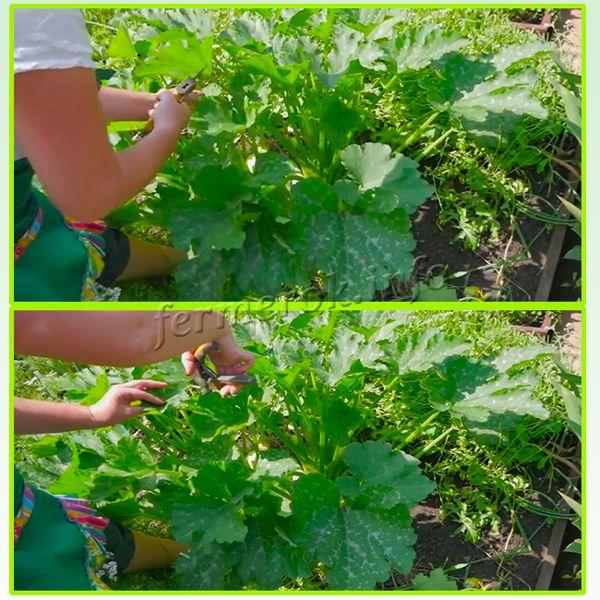

If the Cavili F1 zucchini grows in the shade, some of its leaves must be removed
This variety is unpretentious in care. Of the permanent procedures, abundant watering is necessary (9 l / sq. M), especially if the soil is sandy, weed removal, loosening, hilling. Of the rare procedures - feeding and treatment from pests.
Important! If the Cavili F1 zucchini grows in the shade, some of its leaves must be removed. This will open up light for the fruit.
Pest control can be preventive (folk remedies) and directed when there is already some kind of disease or pest. Top dressing at the beginning of growth is carried out 1-2 times with nitrogen substances, and potassium and superphosphate can be added during the flowering period.
Seed preparation for sowing
Select all large seeds and discard empty seeds. They are heated under the sun for 10 days, or in an oven for 4 hours, gradually increasing the temperature to 50 degrees.
You can soak the seeds in a growth promoter. For 200 ml of water 6 drops of "Epin Extra". Leave for 15-20 hours without a lid. To exclude root rot and bacteriosis, process the seed material for 2 hours in a phytosporin solution, or in a weak solution of potassium permanganate for 12 hours.
Read more: Citrus medica. Growing citrus buddha hand at home
Sometimes it is already indicated on the seed packages that the seeds do not need processing, then this step can be skipped.
For frost resistance, hardening is carried out. To do this, the seeds are placed in the refrigerator for 3 days on the lowest shelf. Or by changing the temperature. Ten hours at room temperature and sixteen hours on the shelf in the refrigerator. After carrying out all the manipulations, the seeds are ready for planting.
Zucchini thrive on light sandy and loamy soils and prefer a neutral environment. On heavy loams, in waterlogged, acidic soil, cavili f1 will not grow. In the fall, dig up the ground in the beds intended for growing cavili f1 to a depth of about 35 centimeters, you do not need to break the clods. In the spring, dig the beds again to a depth of about 25 to 27 centimeters.
Waterlogged soil when falling will fall in one lump and flatten, you should not rush to planting. If the site is low, dig it to a depth of about 15 centimeters and form beds 20-30 and 100 centimeters wide with a slope to the south for better soil warming.
Zucchini grow very well in beds with insulation. Make furrows 30 cm deep, put compost there, cover with 20 centimeters of soil on top. With this method of soil preparation, the yield increases significantly.
In the spring, it is recommended to add fertilizers to the soil in accordance with the type of soil (per square meter):
- Peat - two kilograms of compost, a bucket of turf, 18 grams of superphosphate, 20 grams of potassium sulfate, 8 grams of ash. Dig up the bed, treat it with copper sulfate (for 10 liters of warm water, take 5 grams of copper sulfate and 200 ml of chicken manure infusion) in a proportion of 3 liters per 1 square meter. After that, cover the bed with foil. Processing should be carried out three days before planting.
- Clay - sand, sawdust, peat, humus - 3 kilograms each, 20 grams of superphosphate, 18 grams of nitrophosphate, 8 grams of wood ash.
- Light loamy - apply the same composition as for clay soil, excluding sand.
- Sandy - turf and peat - two buckets each, sawdust and humus - three kilograms each. The composition of mineral fertilizers is similar to that for clay soils.
- Black earth - three buckets of turf, half a bucket of sawdust, 40 grams of superphosphate, 16 grams of ash.
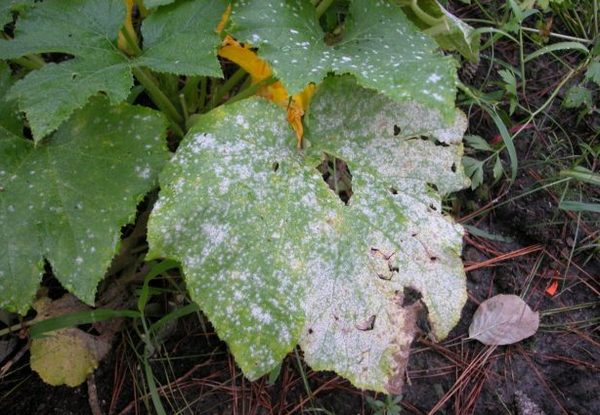

Seed material is used only purchased. Harvested from last year will not work. The seeds do not need to be specially prepared. To speed up the germination, it is worth performing certain manipulations:
- soak them in warm water for several hours;
- wrap in a damp cloth for a day.
The seeds should swell. It is important to ensure that they do not germinate. It is not worth etching them, because they have already been treated with special substances.
Harvesting
The harvest of zucchini of this hybrid is expected in July or early August, depending on the climatic conditions. Fruiting for him is long, so until late autumn it will be possible to feast on ripe fruits.


The producers stated that the fruits do not overripe
The producers stated that the fruits do not overripe, however, when they are on the plant for a long time (about a week), their peel begins to coarse. Therefore, for fresh consumption, it is worth picking young zucchini, since they have a very thin peel. For long-term storage in refrigerated chambers, ripe zucchini with a denser skin are more suitable.
Zucchini Cavili F1 contains many vitamins, nutritious, tender, tasty pulp, sweetish. Ideal for canning. When salted and pickled, they acquire a characteristic crunch, do not lose their taste. Also popular fresh (raw), for frying, grilling, stewing.
Diseases and pests
| Black mold It affects all parts of the zucchini. Ways to fight:
|
| Melon aphid Gnaws leaves, ovary, flowers. Ways to fight:
|
| Whitefly Sucks juices from leaves. Ways to fight:
|
The main advantages of this variety
One of the main advantages that zucchini of this variety have is their early maturity. So, already after 40–45 days from the moment of planting, the seeds of "Kavili" zucchini bear fruit. And the plant continues to bear fruit for several more months.
Another important advantage of the "Kavili" zucchini is that the plant looks like a bush. This feature is important for saving space and is perfect for those with limited land. Also ideal for greenhouse cultivation.
Another advantage of this type of zucchini is that it is capable of self-pollination, since both male and female inflorescences grow on the same bush. Therefore, even in the most unfavorable weather, the "Kavili" zucchini will still please with the harvest.
Fruiting and productivity
The Cavili squash is considered one of the most productive Dutch hybrids. The more you pluck, the sooner they grow. 8-10 kg of excellent vegetables are harvested from 1 m2 of area.
- Elongated cylindrical fruits with a light green, flat surface. The weight of one zucchini is 300-400 g.
- The light pulp is liquid, tender, with a small amount of seeds. The main thing is not to let the fruit outgrow.
- The rind is thin but firm. Zucchini Cavili is easily transported, the reliable skin protects against mechanical damage, keeping the market look.
Fans of the vegetable note the special, delicate, sweet taste of zucchini. It is stewed, fried, stuffed. Cavili caviar is very tasty.
Zucchini is suitable for baby food.

